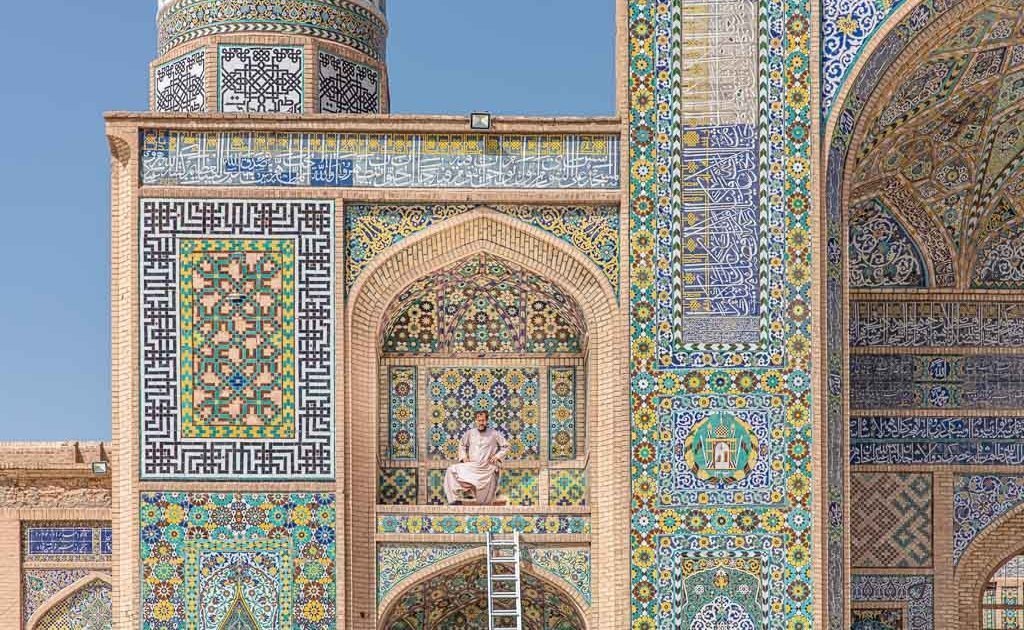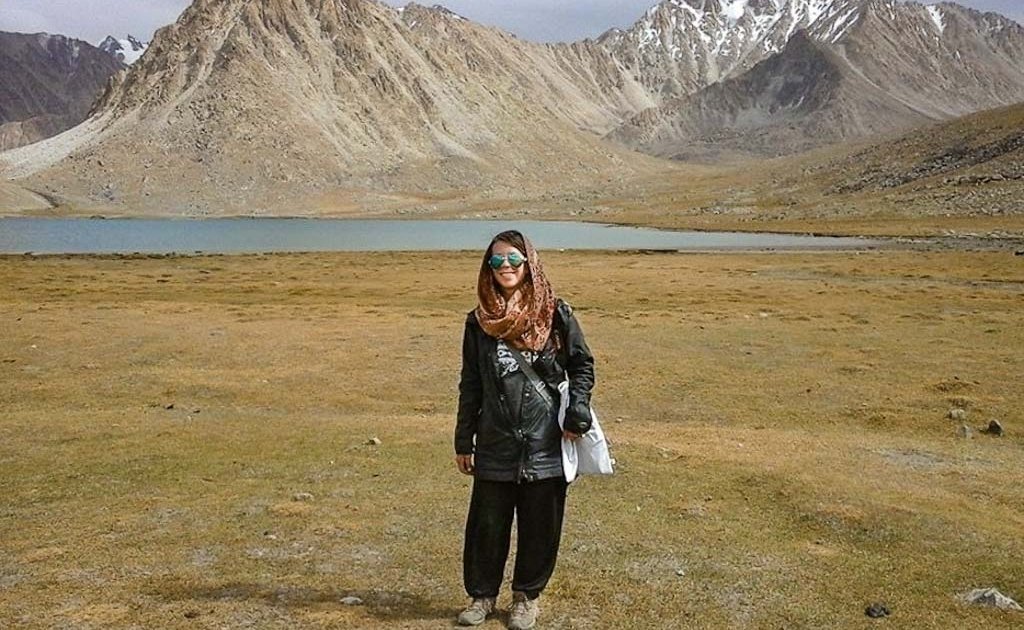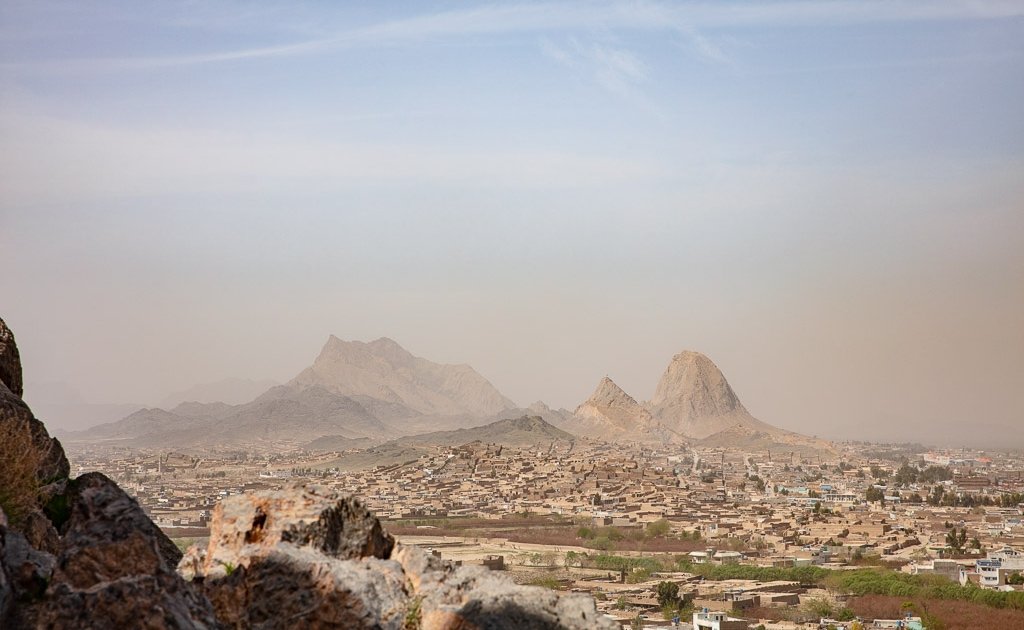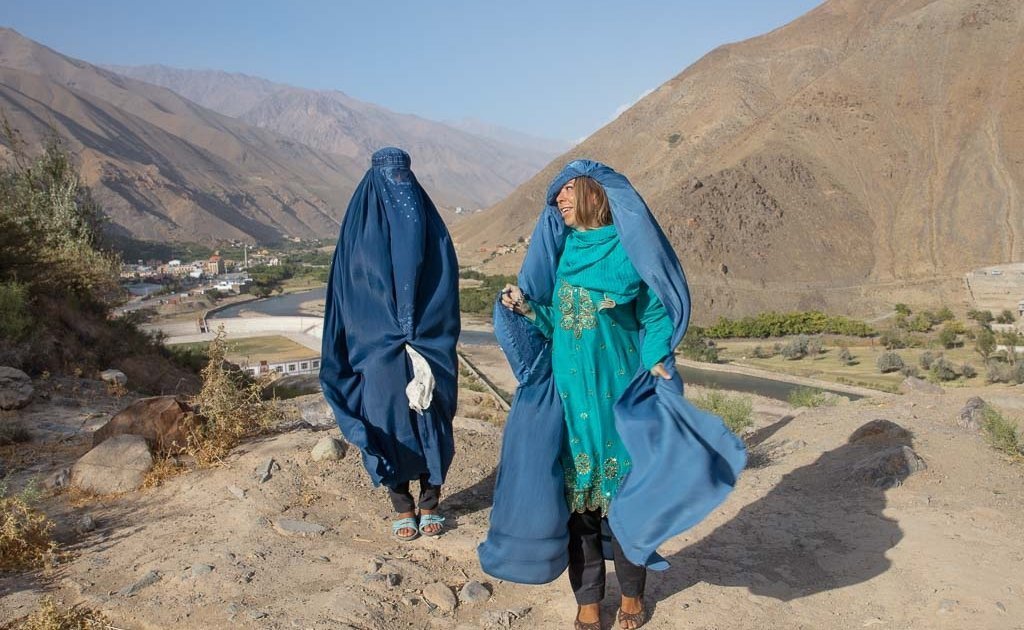
Mazar e Sharif in Photos & Travel Guide
Updated May 2023, Mazar e Sharif in Photos & Travel Guide was originally written in February 2019
After several trips that have brought me to Mazar e Sharif, Afghanistan here is a guide to help you plan your time in the city. Following the guide, you will find some of my favorite photos.
- Mazar e Sharif Travel Guide
- Safety In Mazar e Sharif
- Photos from Mazar e Sharif, Takht e Rustam & Old Balkh
Mazar e Sharif Travel Guide
Things To Do In Mazar e Sharif
Shrine of Hazrat Ali

The Shrine of Hazrat Ali sits in the beating heart of Mazar e Sharif. The Shrine was built in the 1100s, destroyed by Genghis Khan by the 1200s, and rebuilt in 1481. Some believe the tomb of Ali to be held here, the son-in-law and cousin of the Prophet Mohammed. It is also believed that Ali’s tomb is located in Najaf, Iraq.
Abdul Ali Mazari Mausoleum
This tomb to Ali Abdul Mazari pays tribute to the late Hazara leader who was killed in 1995 by the Taliban. He was the leader of the Hezb e Wahdat party during and after the Soviet invasion who fought for equal representation among ethnic groups within the Afghan government.

Shop in the Mazar e Sharif Bazaar
Being a bit more laid back than other cities in Afghanistan, the Mazar e Sharif Bazaar is one of my favorite places to shop in the country for random items to bring home. Good things to pick up include carpets, clothing, spices, jewelry, and more.
Where To Sleep In Mazar e Sharif
- Budget: Barg e Sabz Guesthouse $20 USD/night, double
- Midrange: Arsalan Hotel $40 USD/night, double
- Splurge: Royal Oak Hotel (Renaissance Hotel) $70 USD/night, double
What To See In Old Balkh
Unfortunately as of November 2020, it is no longer safe to visit the sites in and around Old Balkh due to Taliban moving in to the city. This is also the case at the time of update in May and June 2021.
Haji Piyada Mosque
Haji Piyada, also known as Non-Gonbad (9 Cupola) Mosque is among Afghanistan’s oldest Islamic sites. Unfortunately the mosque has suffered extensive damage due to the combination of neglect and war. The mosque is partially covered and surrounded by a fence, though it’s still possible to see it.

Khoja Parsa Mausoleum
Khoja Parsa Mausoleum is in the center of modern Balkh. The Mausoleum was built in honor of the Naqshbandi spiritual leader Khodja Abu Nasr Parsa, who originally hailed from Balkh. There isn’t evidence that the Mausoleum is the actual site of his tomb.
Rabia Balkhi Mausoleum
Rabia Balkhi is thought to be the first female poet of the modern Persian era. She penned several famous poems, though her most favorite was her last one written- in her own blood on the walls in which she lie dying. Upset that she had fallen in love with a slave, her own brother killed her.

Bala Hisar (Walls of Balkh)
Bala Hisar, or more commonly called the Walls of Balkh date back to the time of Alexander the Great and when Bactria was at its zenith. The walls of Balkh have seen some wild stories unfold over their 2,500 years of existence. Balkh was once the epicenter of the Bactrian kingdom.
The walls are largely in ruin, crumbling under the baking sun.

A Half-Day Trip to Charkent
Charkent lies just 30 minutes south by car from Mazar e Sharif and makes for a nice quick jaunt from the city. Guarding the entrance to the area is an 800 year old gate built to prevent the Mongols from entering the area. The Charkent Gate also managed to stop the Soviets from reaching the area during their invasion, as well as the Taliban during their reign over the nation.
Beyond the gate are small villages set in the rocky outcrops that lie here south of Mazar e Sharif. The people who reside out here live a mostly rural lifestyle.

What To See At Takht e Rustam

The Takht e Rustam Buddhist Stupa
This is the unique Buddhist Stupa at Takht e Rustam. What sets this stupa apart is the fact that it’s built into the rock, not stacked high above it. There are two theories as to why Takht e Rustam is built in such a way. One theory is that it was built this way to disguise the stupa to help prevent attack by bandits and invaders that traveled along the ancient Silk Road. The other theory was that it was a means to keep the monastery cooler in Afghanistan’s sweltering summertime temps.
Note that as of May 2021 there is now a 400 AFS fee being collected by the caretaker for foreigners visiting Takht e Rustam and the caves/bazaar next to it.
Buddhist Caves & Ancient Bazaar
Just down a hill from the Takht e Rustam Stupa is a large mound that housed a once bustling cave bazaar and Buddhist temples. Though they sit totally empty these days they still are fascinating to visit to just imagine what they must have been like centuries ago.
Getting In & Out Of Mazar e Sharif
- Kabul: For $85 USD each way you can fly between Kabul and Mazar e Sharif. Kam Air offers several flights per day alongside other Afghan carriers. As of June 2021, it is no longer recommended to travel by road between Mazar e Sharif and Kabul. The area near Pul e Khumri in Baghlan Province has become unstable with Taliban checkpoints popping up. If things improve in the future, it should be possible to make the journey by road between the two cities, in which I do recommend a guide and car hire. There is a bus between the two cities for 600 AFS each way but is not recommended. For those determined to take the bus do not take the overnight one.
- Bamyan: At the moment the only way to reach Bamyan is by road. The road via Ghorband is safe (by Afghan terms), but you should fly from Mazar to Kabul and then continue by road to Bamyan.
- Uzbekistan: At the time of writing traveling between the Hairitan/Termiz border crossing with Uzbekistan to Mazar e Sharif is relatively safe. Expect to pay 1,100 AFS for a taxi between the border and Mazar.
- Herat or Kandahar: Traveling by road to either place is not recommended at this time due to Taliban control and/or presence on some parts of the highways. You can reach either city by flight with a stop in Kabul.
Getting From Mazar e Sharif To Old Balkh
Taxis to Old Balkh should cost around 1,500 AFS round trip to visit several sites around Balkh.
Getting From Mazar e Sharif To Takht e Rustam
Taxis can be hired for about 3,000 AFS for the day trip to Takht e Rustam in Samangan, including a stop at Bagh-e Jahan Nama Palace.
Safety In Mazar e Sharif
Mazar e Sharif is one of the safer places to visit in Afghanistan (I use the term safe loosely as we are talking about Afghanistan after all here). With that said, Mazar e Sharif is not immune to violence. There have been attacks and explosions resulting in injury and death in Mazar e Sharif in the past so don’t these are risks lightly. I highly recommend using a local guide such as Let’s Be Friends Afghanistan to help you plan a safer visit to Afghanistan.
On all of our nights in Mazar e Sharif we did stay out after dark (until about 9 pm) shopping in the bazaar and eating dinner without issue, however, traveling outside the city should only be done during the daylight hours.
Start planning: The Afghanistan Travel Guide
Photos from Mazar e Sharif, Takht e Rustam & Old Balkh
Meeting the Peace Caravan
We finally reached Mazar e Sharif just after sundown after a long full day of driving from Bamyan. We’d have made it a bit sooner had we not enjoyed a long lunch at a leafy chaikhana along the Darya Khenjan (River) in Baghlan Province, meeting a busload of curious Afghans making the journey from Mazar e Sharif to Kabul and if it wasn’t for our crossing paths with the Peace Caravan, a group of men who started walking from the Helmand Province in May to protest the war.

This is the Peace Caravan. These men, fed up with terrorism and war that has ravaged the country for the last 4 decades, began walking in May 2018 in protest, following a 50 day sit-in in Laskargah. The final straw that broke these Afghan’s backs? A suicide attack in Helmand Province that left 16 dead. Helmand has seen a substantial amount of the fighting post 2001.

They first started walking with the goal to arrive in Kabul, stopping in several provinces along the way to speak with political leaders and even members of the Taliban to demand an end to the war. After nearly 40 days and 700 kilometers later the Caravan arrived in Kabul where they spoke with various politicians. Here in this frame, they are explaining to us their cause and the challenges and successes they have faced.

Ultimately the group decided to continue walking to Mazar e Sharif, where we met them about 60 kilometers before the city. They now plan to walk to every province in the country to continue their mission of bringing the war to an end.

Despite the men’s many hardships, struggles making the journey, anger because of loved ones lost due to senseless violence they seemed to be optimistic, laughing and smiling when we crossed paths with them on the road to Mazar e Sharif.

Marching for peace into the sunset.
First Stop: Old Balkh & Surroundings
Early in the morning we made way to Balkh to beat the heat, but not first without getting caught in the chaotic Mazar morning traffic

No more room? No problem. Seeing taxis riding around with passengers sitting in open trunks was not uncommon in Afghan cities. If this scene was taking place in the USA (home for me) it would make national news and this man would be cast a villain with angry PTA parents wielding modern day pitchforks in the form of keyboards stopping at nothing, but in Afghanistan this is normal.
Haji Piyada

Our first stop was Haji Piyada, the Nine-Cupola Mosque, believed to be the oldest Islamic building in Afghanistan. The mosque has sustained substantial damage after years of war and neglect but is undergoing restoration efforts.

Following our new found friend back to his hash paradise. We met this man while viewing Haji Piyada and he quickly invited us for a session.

Hash growing in Balkh.

When in Afghanistan, right? Cannabis grown in Mazar e Sharif is prized throughout the entire country for its superior quality. Many strains popular in western countries such as OG Kush and Purple Hindu Kush can trace their roots back to north-central Afghanistan and Pakistan where the Hindu Kush Mountains rise.
Read more about our high times in Old Balkh
Onto The Bala Hisar (Walls of Balkh)

The loneliest swing set in the world, encircled by what was once a bustling center of the Bactrian kingdom.

Though Afghanistan is populated by some of the most hospitable people on the planet, many swaths of the country house some pretty inhospitable landscapes. This baked-dry-by-the-sun dog inside the Walls of Balkh makes it quite apparent.

A man and son on horseback viewed from the Bala Hisor (Walls of Balkh).

Salaam (سلام), yelled these young men as we climbed back atop the walls of the ancient Walls of Balkh.

Khoja Parsa Mausoleum At The Heart Of New Balkh

Women walking into the distance at Khoja Parsa Park in Balkh.
Welcome To Mazar e Sharif



The Shrine Of Hazrat Ali

Men breaking for chai in the golden afternoon light.

Birds of a feather turn white together. The legend of the Shrine of Hazrat Ali is that due to the sanctity of peace on the mosque’s grounds, all doves here are white. If they arrive with even one speck of color and stay around they will turn all white within 40 days. There are an estimated 10,000 doves living at the mosque.

Mazari residents enjoying a Friday afternoon at the Shrine of Hazrat Ali, commonly referred to as the Blue Mosque, owing to its elaborate blue tiles.

One of Mazar e Sharif’s famed and feathered residents hiding in a niche at the Blue Mosque.

The Blue Mosque isn’t just a shrine to Ali or place of worship. It’s a meeting point for the community. At sunset you could find many Mazar e Sharif residents on the mosque grounds laughing with friends & family, kids playing with balloons & chasing doves and countless teenagers & young adults striving to snap the perfect selfie.
Shopping At The Mazar e Sharif Bazaar

Afghanistan is widely known for its beautiful carpets. Many of the countries finest are created by carpet weavers from Northern Afghanistan. Eventually, their works make it down to Mazar e Sharif and beyond for sale at bazaars.

One thing for certain in Afghanistan is that you won’t go hungry. Locals will stop at nothing to make sure you are more than fed, even if that means skipping meals themselves or eating simple rice while serving guests with lavish dishes. Hospitality is an art, a religion here in Afghanistan.
Morning At The Shrine Of Hazrat Ali

Morning time at mosques is special with the stillness around and the golden sun rising above the distant horizon.

The Shrine of Hazrat Ali is a place I wasn’t satisfied with visiting once. Each day in Mazar e Sharif we found ourselves drawn back to this gorgeous building just like the locals. Photo Credit.
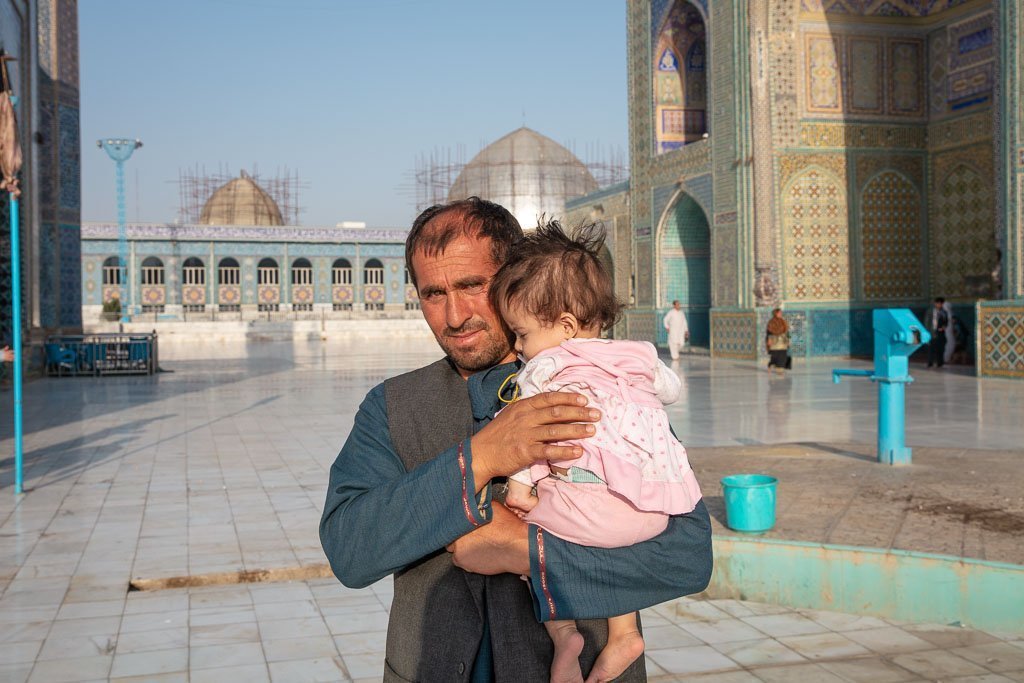
One morning at the Blue Mosque this man followed me around for quite a while, occasionally popping into my frame holding his baby girl. I didn’t think much of it until he finally approached me. He was dying to get him and his daughter’s photo taken and motioned me to take their photo up close.

A woman walking in the famous blue chadri. The chadri is the name given to the full covering worn by Afghan women that many know as a blue burqa. They date back to pre-Islamic times, worn by Pashtun women as a sign of respectability. When the Taliban came to power from 1996-2001 women were required to wear them when out in public. Since the fall of the Taliban, fewer women are wearing them, though you’d be hard pressed to go a day without seeing a woman wearing one. In certain conservative areas, they are more prominent and many women wear them as a means of personal security to avoid being attacked. Others wear them because of familial pressure.

A woman in chador and another in niqaab an abaya walk on to the mosque grounds… The woman in white is wearing a chador while the woman in black is wearing the niqab and abaya. The chador is an open cloak-like cloth worn over the head and held shut with the hands (though the mask worn in this photo isn’t always seen). They are common especially in Herat, conservative parts of Iran, Iraq and other Shia areas. It is not uncommon to see women in Afghanistan wearing the black abaya worn with a niqab (the half-face covering) that is more popular on the Arabian Peninsula.

A man stepping out from his morning prayer. Non-Muslims are not permitted inside the mosque.

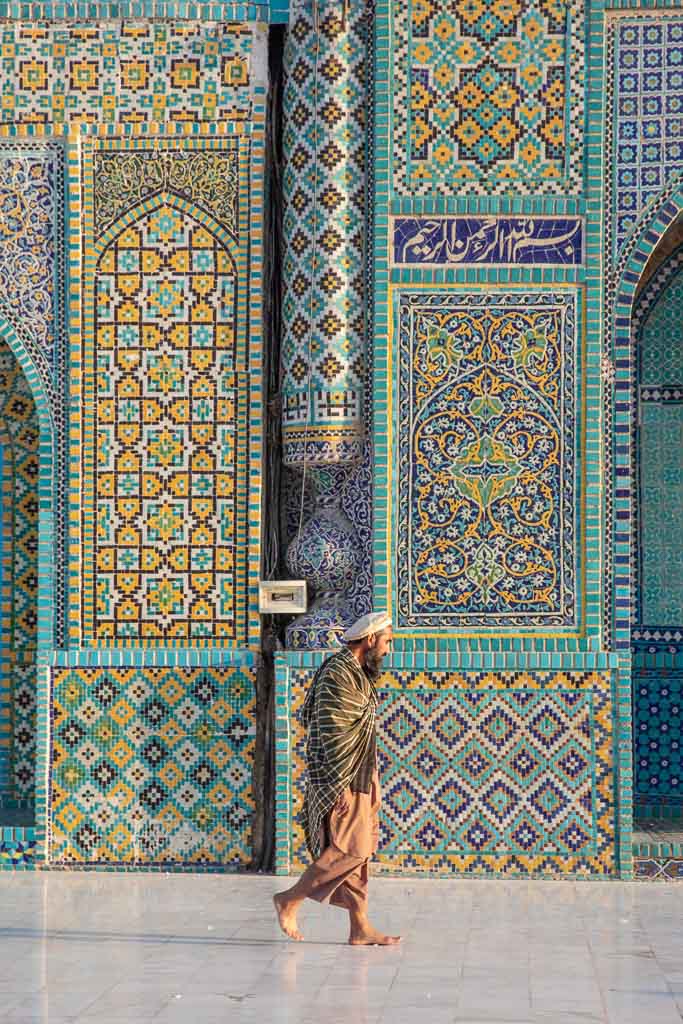

A Journey To Takht e Rustam
A road trip about 100 km southeast of Mazar e Sharif brings you to Afghanistan’s best remaining Buddhist sites in the Samangan Province, Takht e Rustam.
Read: A Day Trip to Takht e Rustam

Inside the bazaar at Takht e Rustam. Once upon a time, this was a bustling bazaar filled with merchants and goods that all took place in a cave. Takht e Rustam is a Buddhist Stupa located in Samangan Province, an easy day trip from Mazar e Sharif. Takht e Rustam translates out to the ‘throne of Rustam’. Rustam was a legendary figure in Persian culture. This is the site in which Rustam married his wife Takhmina, the daughter of the King of Samangan after Rustam had lost his horse. At the time of their wedding, Rustam gives Takhmina a jewel.
A short time later Rustam leaves Takhmina after finding his horse and takes off for Iran. Roughly 9 months later Takhmina gives birth to Rustam’s son. Unknowingly, Rustam kills his son in battle, only to piece the puzzle together when he sees the jewel strung around his son’s neck.

A Buddhist temple next to the ancient cave bazaar at Takht e Rustam. After the destruction of the Bamyan Buddhas Takht e Rustam is likely the most impressive Pre-Islamic site in Afghanistan.
Bagh e Jahan Nama

Just outside Mazar e Sharif in the village of Kholm sits the walled-off Bagh e Jahan Nama Palace with the mightly Hindu Kush looming over in the background. The palace was initially constructed between 1890-1892 and renovated between 1974-1976. During the Russian Invasion, the palace and its gardens were used by Russian soldiers as a base. Now the palace sits unused, though you can usually find locals from Kholm picnicking and swimming in the garden pools.
Nowruz Buzkashi In Mazar e Sharif


Buzkashi is a brutal sport popular in Central Asia, especially in Tajikistan and Afghanistan, as well as in Kyrgyzstan where it’s called Kök Boru. Spectators, entirely a male audience watch the game played piled atop of buildings and broke down vehicle roofs.


Buzkashi rules are similar to those of polo, but the major difference being a headless goat or cow being used as a ball. The torso, that many around these parts call ‘the beef’ is jockeyed around with horsemen vying to drop the beef into the goal to score a point against the other team.


Henna dyed horsetails.

A brief break in the game.

A horseman stops to pose for a photo on the Buzkashi grounds.

A player packing up to go home after a game.
Have Any Questions From This Mazar e Sharif Travel Guide?
Ask in the comments section below.
Need Travel Insurance for Afghanistan?
Start shopping plans over at battleface.

